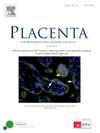伴有先兆子痫的孕妇中风动态
IF 3
2区 医学
Q2 DEVELOPMENTAL BIOLOGY
引用次数: 0
摘要
引言子痫前期是哈萨克斯坦孕产妇死亡的主要原因之一,近年来患病率不断上升。这种情况对孕产妇和新生儿的健康构成重大风险。确定子痫前期女性中风发展的预后标准对于改善预后至关重要。方法。本研究评价临床特征及危险因素对孕妇子痫前期卒中的诊断意义。回顾性分析200例孕妇,分为两组:伴有子痫前期急性脑血管事件的孕妇100例(主组)和伴有子痫前期但未发生卒中的孕妇100例(对照组)。数据收集于2016年至2022年,重点是临床、遗忘和实验室标记物。结果。两组之间的危险因素有显著差异。子痫前期中风的主要预测因素包括高龄产妇(35岁)、肥胖、有中风家族史和死产史。与对照组相比,主要组出现紧急剖腹产、产妇死亡、宫内胎儿死亡和新生儿早期死亡等不良后果的频率更高。讨论。研究结果强调了早期识别和监测高危妊娠以预防中风和改善孕产妇和新生儿结局的必要性。基于这些风险因素的积极干预措施有助于降低哈萨克斯坦的孕产妇和围产期发病率和死亡率。本文章由计算机程序翻译,如有差异,请以英文原文为准。
Dymanics of stroke in pregnant women with preeclampsia
Introduction
Preeclampsia is one of the leading causes of maternal mortality in Kazakhstan, with its prevalence rising in recent years. The condition poses significant risks to both maternal and neonatal health. Identifying prognostic criteria for stroke development among women with preeclampsia is essential for improving outcomes. Methods. This study evaluated the diagnostic significance of clinical features and risk factors for stroke in pregnant women with preeclampsia. A retrospective analysis was conducted on 200 pregnant women divided into two groups: 100 women with acute cerebrovascular events associated with preeclampsia (main group) and 100 women with preeclampsia but without stroke (comparison group). Data were collected from 2016 to 2022, focusing on clinical, anamnestic, and laboratory markers. Results. Significant differences in risk factors were observed between the two groups. Key predictors of stroke in the context of preeclampsia included advanced maternal age (>35 years), obesity, a maternal family history of stroke, and a history of stillbirth. Adverse outcomes such as emergency caesarean sections, maternal death, intrauterine foetal death, and early neonatal death were more frequent in the main group compared to the comparison group. Discussion. The findings highlight the need for early identification and monitoring of high-risk pregnancies to prevent stroke and improve maternal and neonatal outcomes. Proactive interventions based on these risk factors can help mitigate maternal and perinatal morbidity and mortality in Kazakhstan.
求助全文
通过发布文献求助,成功后即可免费获取论文全文。
去求助
来源期刊

Placenta
医学-发育生物学
CiteScore
6.30
自引率
10.50%
发文量
391
审稿时长
78 days
期刊介绍:
Placenta publishes high-quality original articles and invited topical reviews on all aspects of human and animal placentation, and the interactions between the mother, the placenta and fetal development. Topics covered include evolution, development, genetics and epigenetics, stem cells, metabolism, transport, immunology, pathology, pharmacology, cell and molecular biology, and developmental programming. The Editors welcome studies on implantation and the endometrium, comparative placentation, the uterine and umbilical circulations, the relationship between fetal and placental development, clinical aspects of altered placental development or function, the placental membranes, the influence of paternal factors on placental development or function, and the assessment of biomarkers of placental disorders.
 求助内容:
求助内容: 应助结果提醒方式:
应助结果提醒方式:


